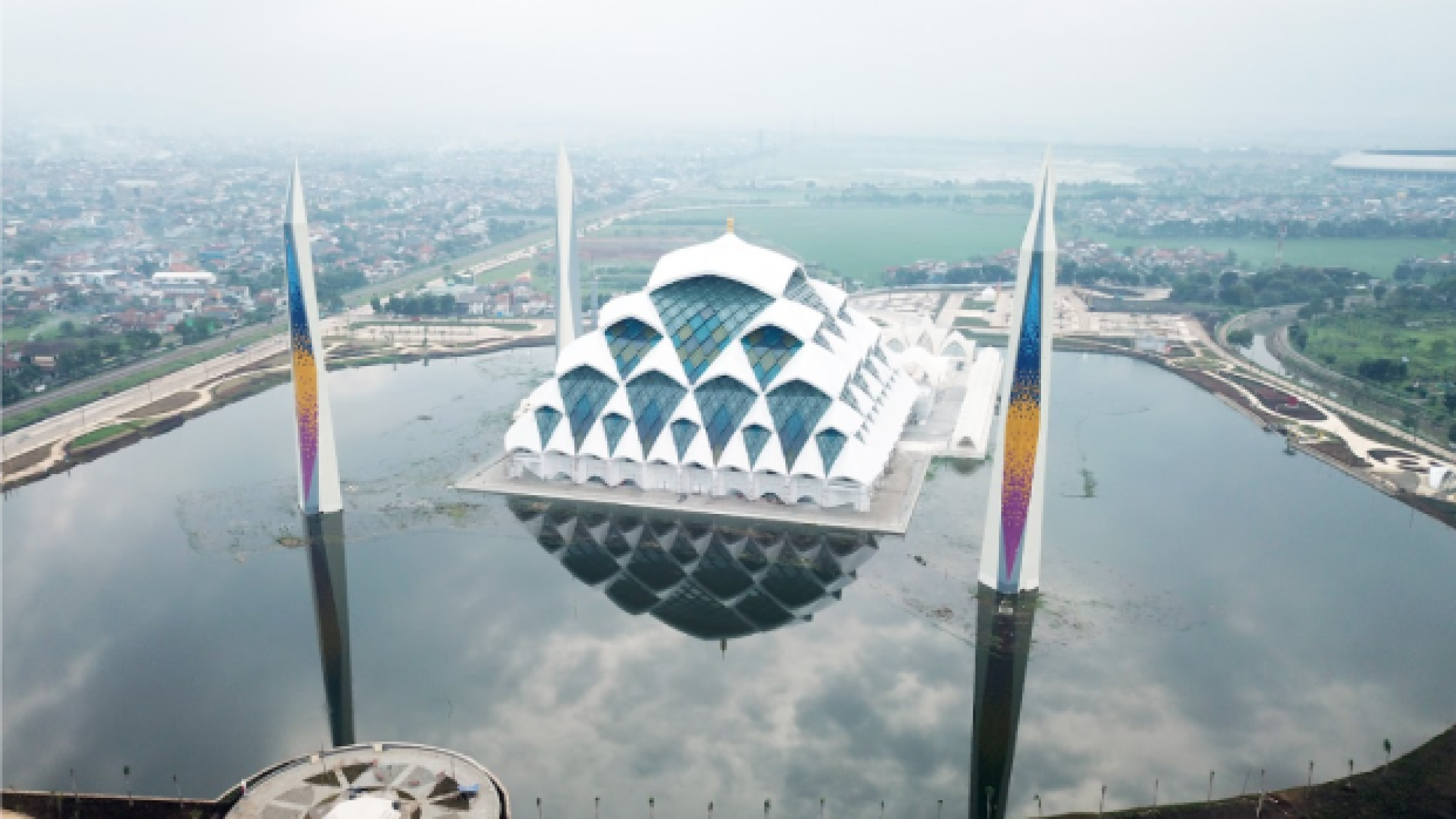In Indonesia, mosques hold a deep cultural and spiritual significance, serving as places of worship and community gathering. However, as time progresses, their architecture has also transformed, making mosques a destination for religious tourism. The facades of iconic mosques across Indonesia — like the Great Mosque of Central Java, the Golden Dome Mosque in Depok, and the Al Jabbar Mosque in Bandung — embody unique design elements that captivate visitors. These structures integrate modern materials, balanced proportions, and rhythmic patterns that define the contemporary yet deeply symbolic architecture of Indonesian mosques.
The Great Mosque of Central Java showcases a blend of Javanese, Roman, and Islamic architectural elements, especially evident in its colosseum-like columns and six monumental umbrellas, inspired by the Nabawi Mosque in Saudi Arabia. The mosque’s white dome and 25 columns, symbolizing the prophets in Islam, evoke both local and global architectural themes. The Golden Dome Mosque in Depok, on the other hand, features five gold-coated domes and six minarets, each representing fundamental tenets of Islam. The sparkling gold embellishments throughout its interior and exterior further enhance its allure, making it one of the most visited religious sites in Southeast Asia.
Equally compelling is the Al Jabbar Mosque in Bandung, designed by architect Ridwan Kamil, which incorporates fish-scale-like glass panels across its façade. This innovative design creates a play of colors and light, resulting in a mesmerizing visual effect. Each mosque leverages different façade elements like granite flooring, carved calligraphy, and ornamented pillars to embody a distinct identity while preserving Islamic architectural principles. The unique facades of these mosques not only serve as a bridge between tradition and modernity but also create a space that draws both the devout and the curious, adding a unique chapter to Indonesia’s rich architectural legacy.

